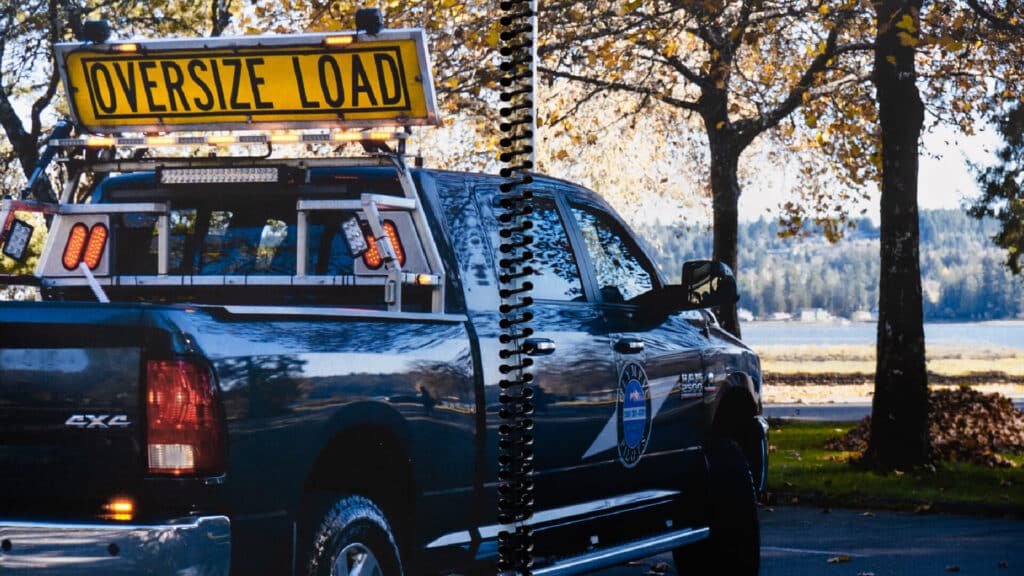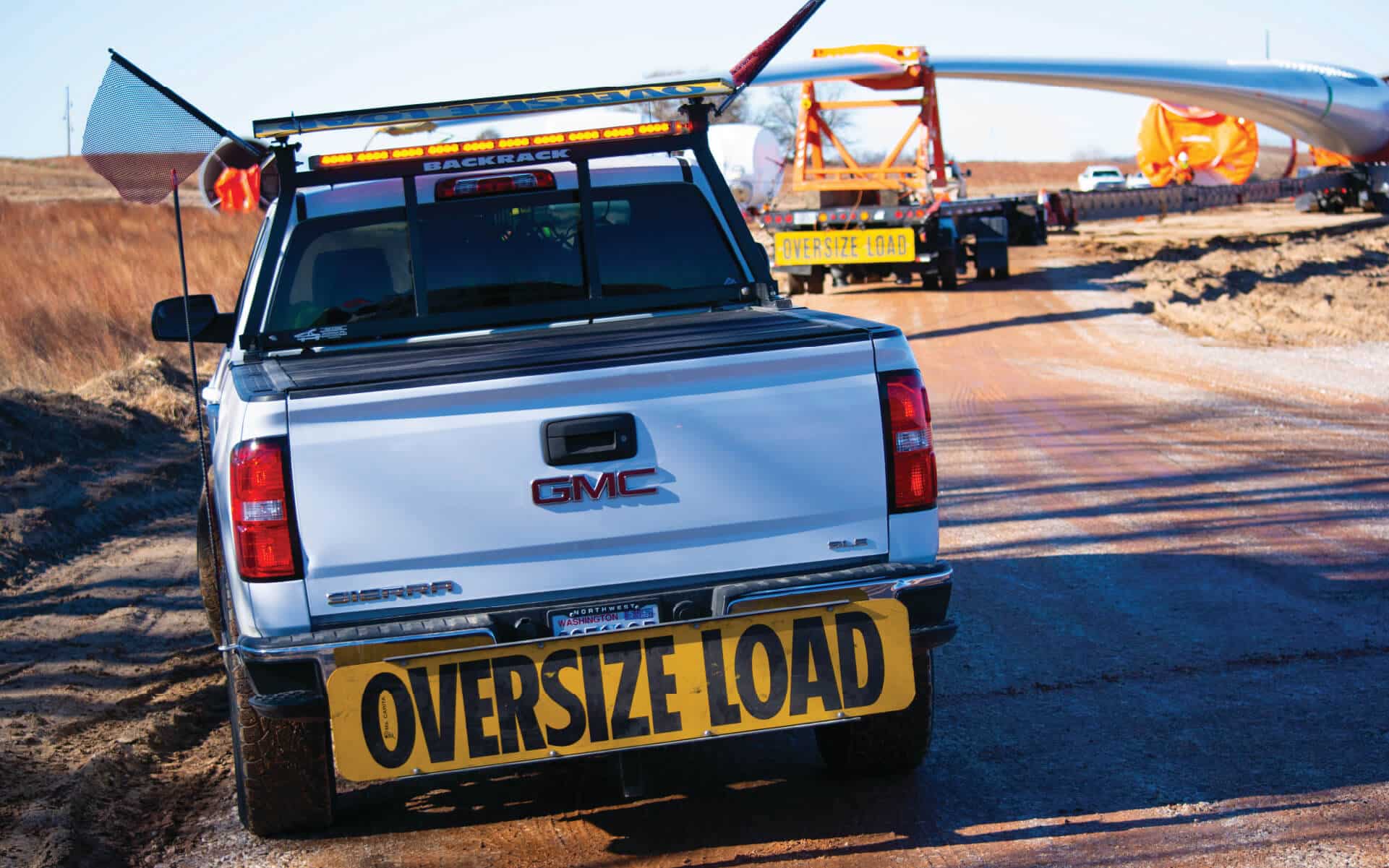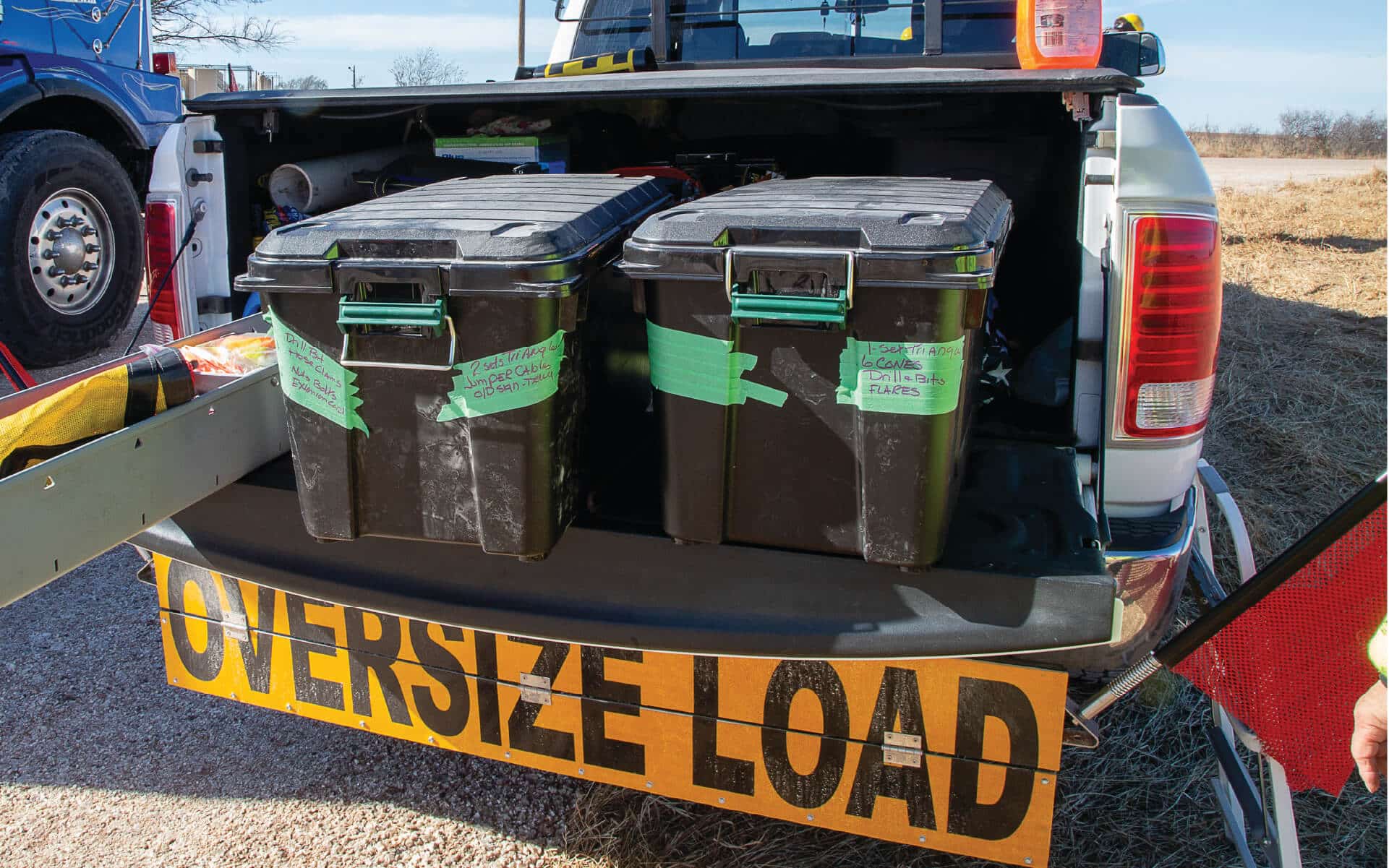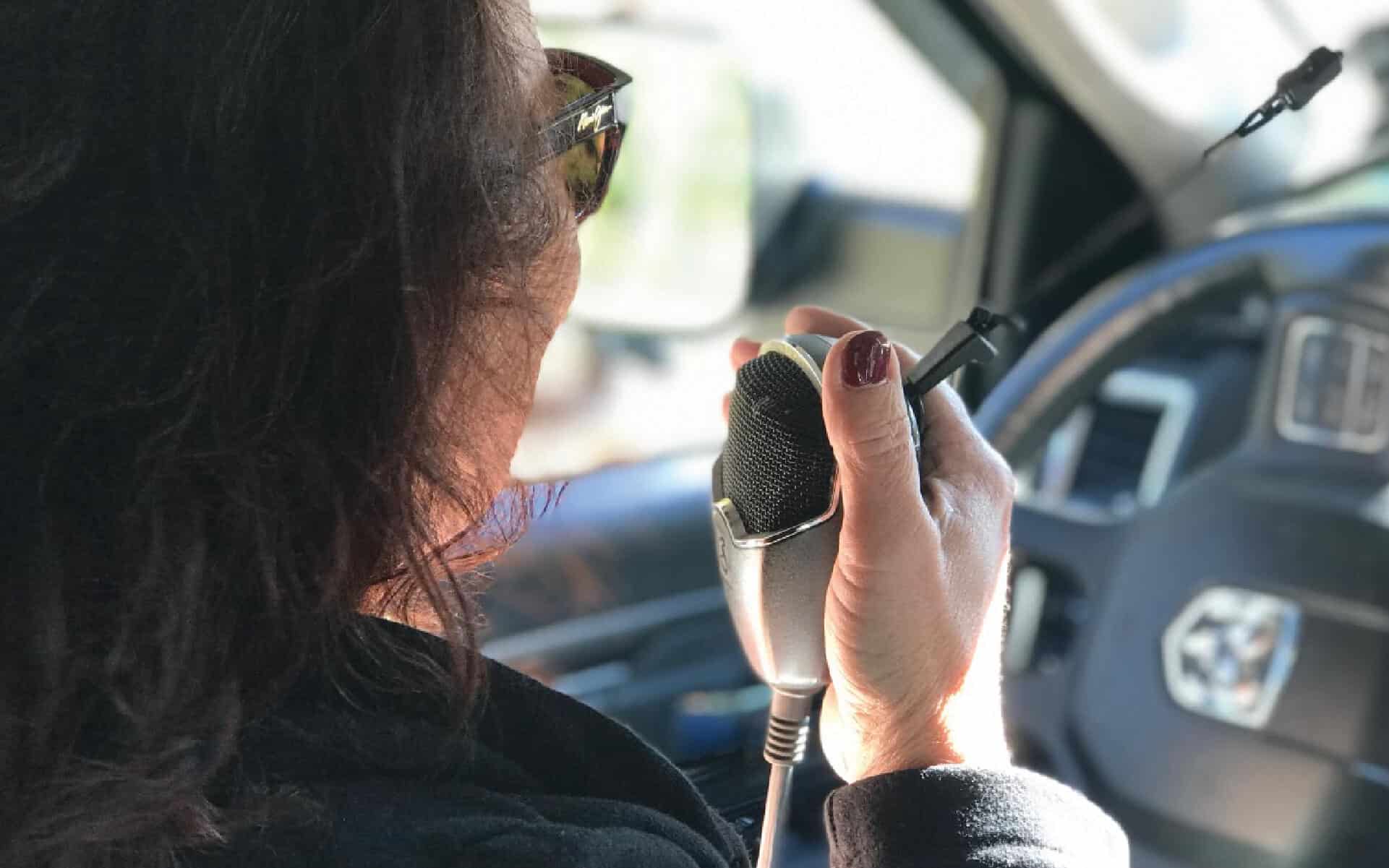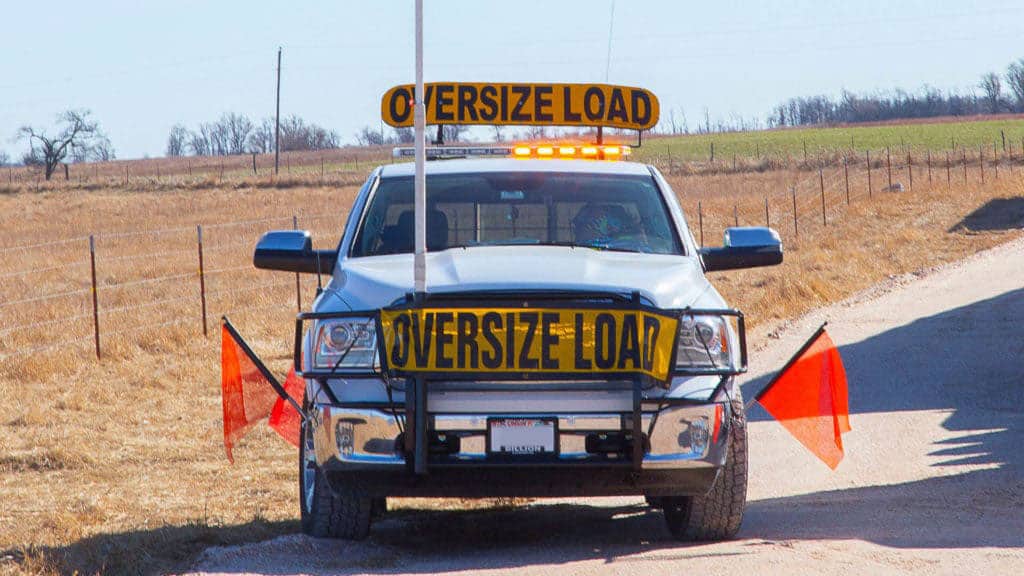When you begin work as a Pilot/Escort Vehicle Operator (P/EVO), you’ll need to become familiar with industry-specific terminology. This glossary includes official terms, as well as more informal lingo, that you can expect to hear and use while on the job.
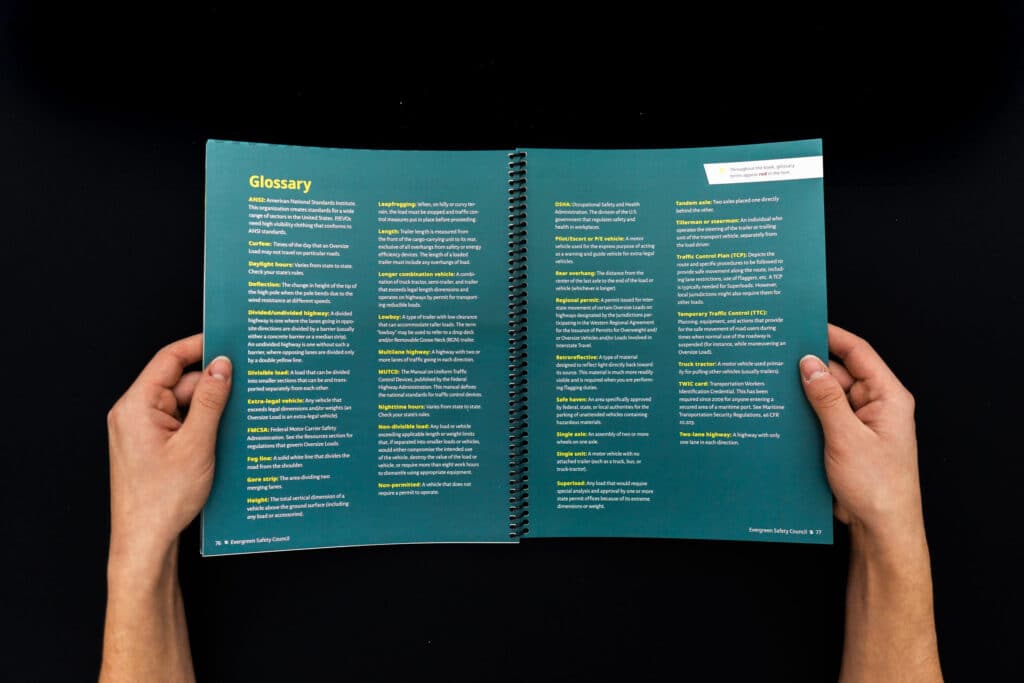
Official Terms
ANSI: American National Standards Institute. This organization creates standards for a wide range of sectors in the United States. P/EVOs, like roadside flaggers, need high visibility clothing that conforms to ANSI standards.
Curfew: Times of the day that an Oversize Load may not travel on particular roads.
Daylight hours: In Washington State, these are defined as one half hour before sunrise until one half hour after sunset. Make sure you verify daylight hours in each state in which you will be operating.
Deflection: The amount the tip of the high pole bends while traveling at high speed.
Divided/undivided highway: A divided highway is one where the lanes going in opposite directions are divided by a barrier (usually either a concrete barrier or a median strip). An undivided highway is one without such a barrier, where opposing lanes are divided only by a double yellow line.
Divisible load: A load that can be divided into smaller sections that can be transported separately from each other.
Extra-legal vehicle: Any vehicle that exceeds legal dimensions and/or weights (an Oversize Load is an extra-legal vehicle).
FMCSA: Federal Motor Carrier Safety Administration.
Fog line: A solid white line that divides the road from the shoulder.
Gore strip: The area dividing two merging lanes.
Height: The total vertical dimension of a vehicle above the ground surface (including any load or accessories).
Leapfrogging: When, on hilly or curvy terrain, the load must be stopped and traffic control measures put in place before proceeding.
Length: Trailer length is measured from the front of the cargo-carrying unit to its rear, exclusive of all overhangs from safety or energy efficiency devices. The length of a loaded trailer must include any overhangs of load.
Longer combination vehicle: A combination of truck tractor, semi-trailer, and trailer that exceeds legal length dimensions and operates on highways by permit for transporting reducible loads.
Lowboy: A type of trailer with low clearance that can accommodate taller loads. The term “lowboy” may be used to refer to a drop deck and/or Removable Goose Neck (RGN) trailer.
Multilane highway: A highway with two or more lanes of traffic going in each direction.
MUTCD: The Manual on Uniform Traffic Control Devices, published by the Federal Highway Administration. This manual defines the national standards for traffic control devices.
Nighttime hours: In Washington State, these are defined as one half hour after sunset to one half hour before sunrise. Make sure you verify daylight hours in each state in which you will be operating.
Non-divisible load: Any load or vehicle exceeding applicable length or weight limits that, if separated into smaller loads or vehicles, would either compromise the intended use of the vehicle, destroy the value of the load or vehicle, or require more than eight work hours to dismantle using appropriate equipment.
Non-permitted: A vehicle that does not require a permit to operate.
OSHA: Occupational Safety and Health Administration. The division of the U.S. government that regulates safety and health in workplaces.
Pilot/Escort or P/E vehicle: A motor vehicle used for the express purpose of acting as a warning and guide vehicle for extra-legal vehicles.
Rear overhang: The distance from the center of the last axle to the end of the load or vehicle (whichever is longer).
Regional permit: A permit issued for interstate movement of certain Oversize Loads on highways designated by the jurisdictions participating in the Western Regional Agreement for the Issuance of Permits for Overweight and/or Oversize Vehicles and/or Loads Involved in Interstate Travel.
Retroreflective: A type of material designed to reflect light directly back toward its source. This material is much more readily visible and is required when you are performing flagging duties.
Safe haven: An area specifically approved by federal, state, or local authorities for the parking of unattended vehicles containing hazardous materials.
Single axle: An assembly of two or more wheels on one axle.
Single unit: A motor vehicle with no attached trailer (such as a truck, bus, or truck-tractor).
Steerperson: An individual who steers any axle (or group of axles) of an articulated trailer, while not on the trailer.
Superload: Any load that would require special analysis and approval by one or more state permit offices because of its extreme dimensions or weight.
Tandem axle: Two axles placed one directly behind the other.
Tillerman: An individual who is physically located on the trailer, steering the rear axles of a Commercial Motor Vehicle at highway speeds.
Traffic Control Plan (TCP): Depicts the route and specific procedures to be followed to provide safe movement along the route, including lane restrictions, use of flaggers, etc. A TCP is typically needed for Superloads. However, local jurisdictions might also require them for other loads.
Temporary Traffic Control (TTC): Planning, equipment, and actions that provide for the safe movement of road users during times when normal use of the roadway is suspended (for instance, while maneuvering an Oversize Load).
Truck tractor: A motor vehicle used primarily for pulling other vehicles (usually trailers).
TWIC card: Transportation Workers Identification Credential. This has been required since 2009 for anyone entering a secured area of a maritime port. See Maritime Transportation Security Regulations, 46 CFR .10.203.
Two-lane highway: A highway with only one lane in each direction5
Informal Lingo
Alligators/’Gators: Shredded pieces of blown tire lying in or near the lane where the load may hit them.
Back: A vehicle coming toward the load.
Back off: Slow down.
Bear: Law enforcement of any kind.
Bumpin’ up: An increase in the current posted speed limit.
Cat tails: Delineators or mile marker posts.
Center up: The lead /high pole escort will instruct the driver where they need to drive while crossing a bridge or covered structure to ensure the load gets across safely. “Bridge coming up, suggest you CENTER UP.”
Chicken shack: Weigh station.
Clean on-ramp: An on-ramp free of vehicles.
Dirty on-ramp: An on-ramp with vehicles.
Dress down: Removing banners, lowering signs and flags, and turning off the warning lights on your vehicle.
Dress up: Raising the “oversize load” sign on top of your vehicle, securing “oversize load” banners to the front and back bumpers, and placing flags on your pilot car vehicle.
Drop down: A decrease in the current posted speed limit.
Eighteens or 18s: Semitrucks (18-wheelers).
Fours or 4s: Passenger cars or trucks.
Hard: Fast.
Left track: The left side of a lane where the tires would naturally travel.
Mustard: The yellow line.
Parking lot: A semitruck hauling cars.
Pocket: Side road along your route that enters the road you are traveling. These can be further defined by “right pocket” (a side road on the right side of your route) or “left pocket” (a side road on the left side of your route).
Pork chop: Small island at an intersection, usually with a sign post in it.
Right track: The right side of a lane where the tires would naturally travel.
Shoe fly: Driving the wrong way on a turn lane to negotiate a corner that’s too tight for a long load to make. Traffic in both directions must be completely blocked to make this turn.
Skids: Flexible piping with ropes running through them. Skids are placed over the top of a load and the ropes are tied to the trailer at the front and back. If the Lead’s height pole tags something low, the driver will slow and the skids will help it glide underneath if need be.
Skinny bridge: A narrow bridge or overpass with less than a foot of shoulder off the fog line.
Steppin’ out: A lead calls this out to their load when they are speeding up to increase their distance.
Tag: Trailer being pulled by a vehicle.
Tiger tails: Larger delineators with a yellow background and diagonal black lines.
Times Two: Multiples of one kind of vehicle.
Up: A vehicle passing the load from behind.
Wiggle Wagon: Semitruck with a trailer. In some states, wiggle wagons have multiple trailers.
Zipper: White or yellow dashed lines separating lanes on roadways, highways, or interstates.
